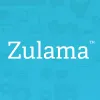
Digital Citizenship Week is October 20–24!
Join teachers worldwide to promote a healthy, positive approach to media and tech.
Take a look inside 7 images
Zulama
Pros: Great scaffolding, built-in assistive technology.
Cons: Some modules require additional software.
Bottom Line: Zulama will help any middle or high school implement a comprehensive computer science program.
Educators can use Zulama to teach an array of computer science skills and concepts. Lessons in Zulama are self-guided. The scope and sequence of these lessons are clear and appropriately build off of each other. Educators need to assign the appropriate modules, and students then work (and play) at their pace. Zulama says it's for K-12, though there didn't appear to be any content suitable for the elementary grades. Teachers can customize lessons and modules if they find they need to.
Zulama provides enough guidance and support for students that teachers don't need to have experience coding to teach the available courses. It would even be reasonable for teachers to learn alongside their students the first time they teach a class with Zulama. Some lessons use additional paid software such as GameMaker Studio 2. Schools considering purchasing Zulama should take this into account, as outside software may come with additional costs and system requirements.
Zulama is a program from Carnegie Learning that includes courses for computer science and coding. Students will appreciate the variety of learning activities and project-based opportunities in Zulama's curriculum. While there are traditional activities like reading, short responses, and essays, there are also videos and multimedia projects woven throughout lessons. Even though the experience is self-guided, there are many lessons where students work together, and other times where they share their work.
Both students and teachers access Zulama through a learning management system (LMS) called Passport. The teacher dashboard displays essential information that one would expect from an LMS, such as student usernames, courses the educator is currently teaching, and assignments that need grading. The grading and feedback can be done within Passport as well. There doesn't seem to be an option to integrate with an LMS that teachers may already be using.
The student dashboard shows students what modules they're enrolled in. Students select the module they're working on and move through lessons and assignments or look at grades and feedback. As students complete lessons, they type, write in a journal, and do coding activities. Some of the coding exercises use DevSpace, a coding platform embedded within Passport LMS.
Zulama will help teachers provide quality computer science instruction to middle and high school students. Lessons and modules (units) appropriately scaffold from one to the next. Teachers who are less comfortable with coding and computer science will feel confident that Zulama is giving students what they need to be successful. Some units even involve ethics in computer science.
Teachers will find that along with computer science concepts, students will also work on 21st century skills like creating, cooperating, digital citizenship, time management, project management, and more. Zulama doesn't (nor is it meant) to replace the teacher. These learning experiences mean that teachers may need to support students in executive functioning and management more than in the content itself.
As students progress, they have access to a variety of built-in assistive technology tools to help them succeed. These tools include text-to-speech and highlighting, as well as adding text, voice, or video notes.
















